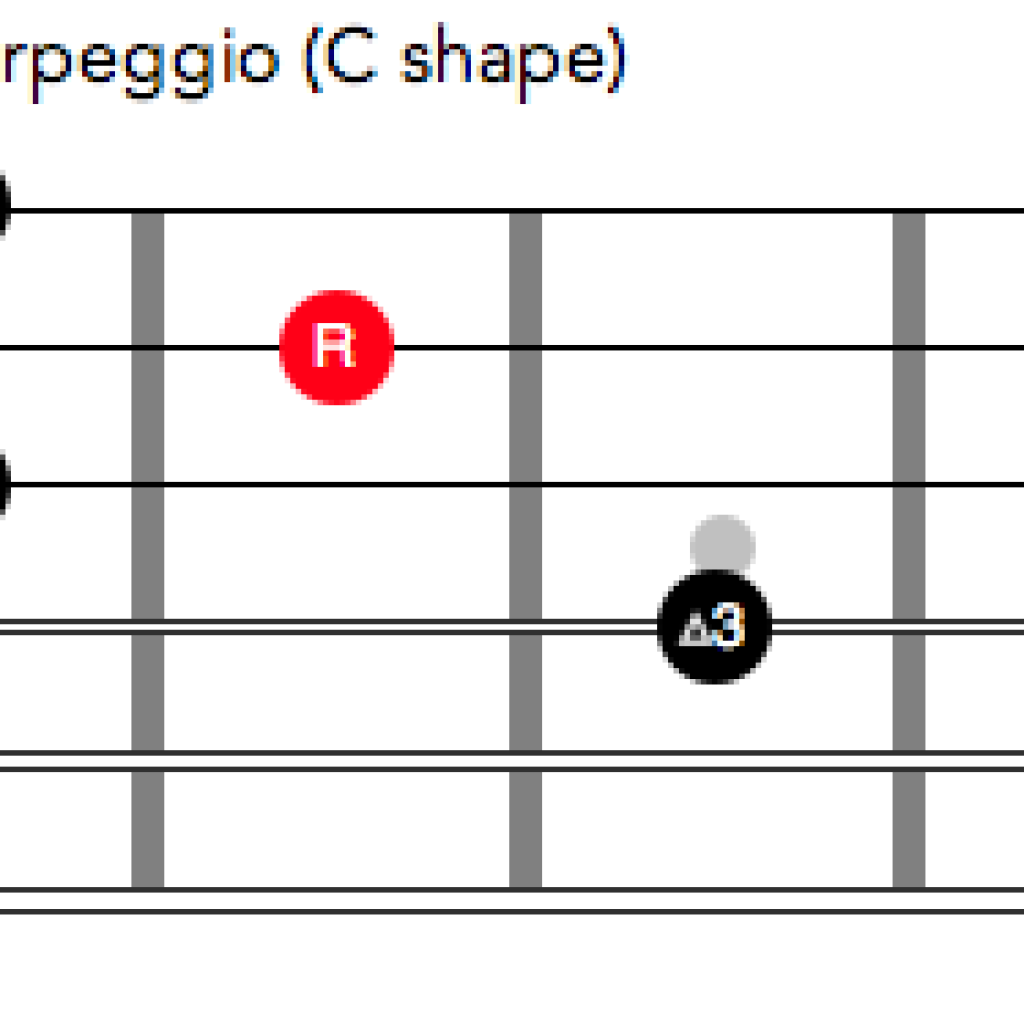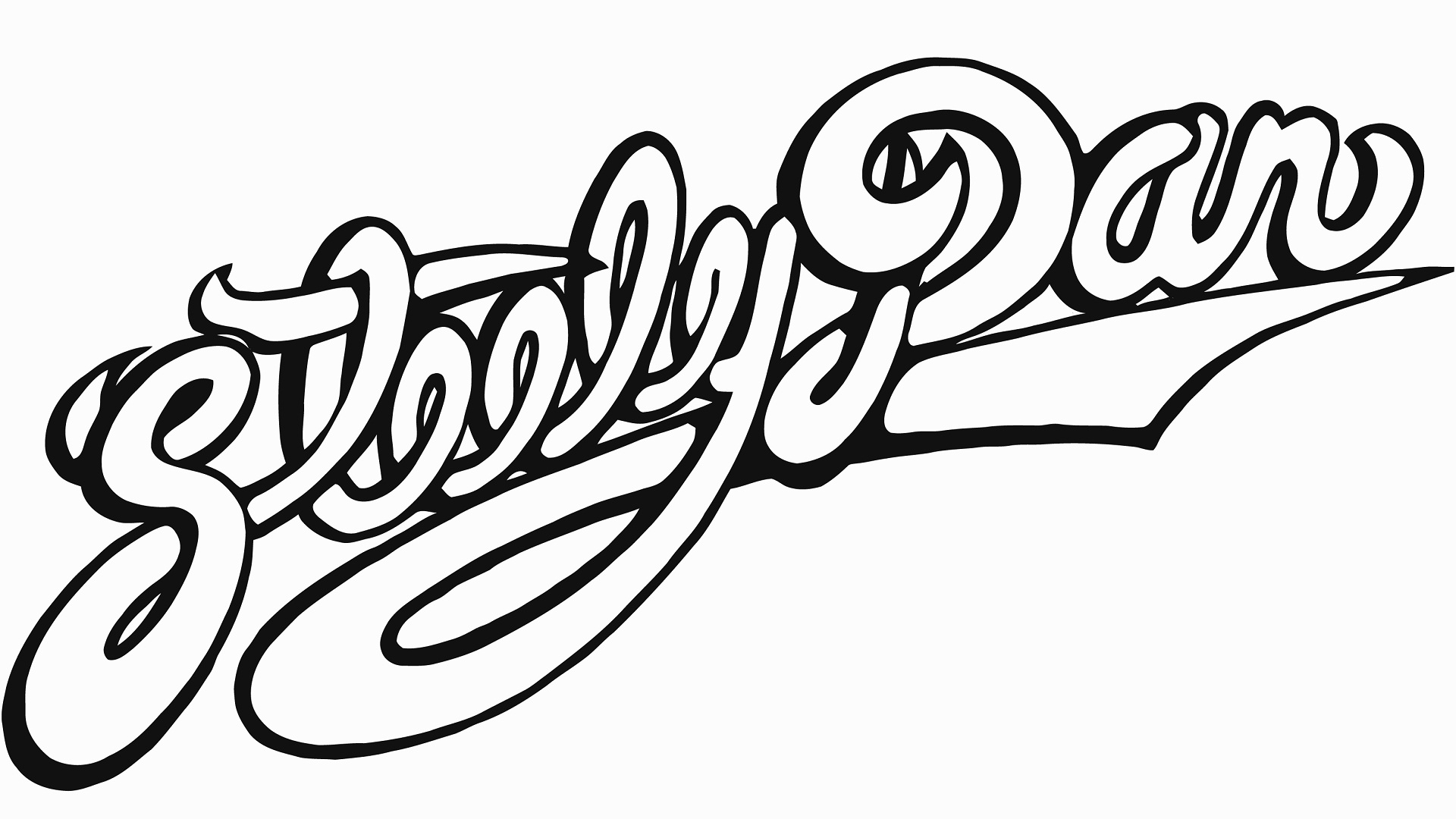Kid Charlemagne
Kid Charlemagne Guitar Solo Transcription
Greetings, axe-wielders, welcome to my debut article. Here I’ll be writing weekly pieces on whatever pricks my interest. Whether it be a new lick, technique or transcription, I hope you can glean something from my ramblings!
I recently rediscovered a transcription of Larry Carlton’s solo from Steely Dan’s ‘Kid Charlemagne’ in an old university text book, and remembering how fun it was the first time around, set about relearning it. Carlton’s note choice is a brilliant blend of ‘inside’ and ‘outside’ playing. Here I’ve broken down what’s going on harmonically, bar by bar. It’s a little dense, more than a little geeky, but important! Hopefully you can incorporate some of his ideas into your own solos.
Here’s my own effort…
… a backing track to try it yourself (8 hits and in)…
Guitar Solo Transcription
… the transcription…
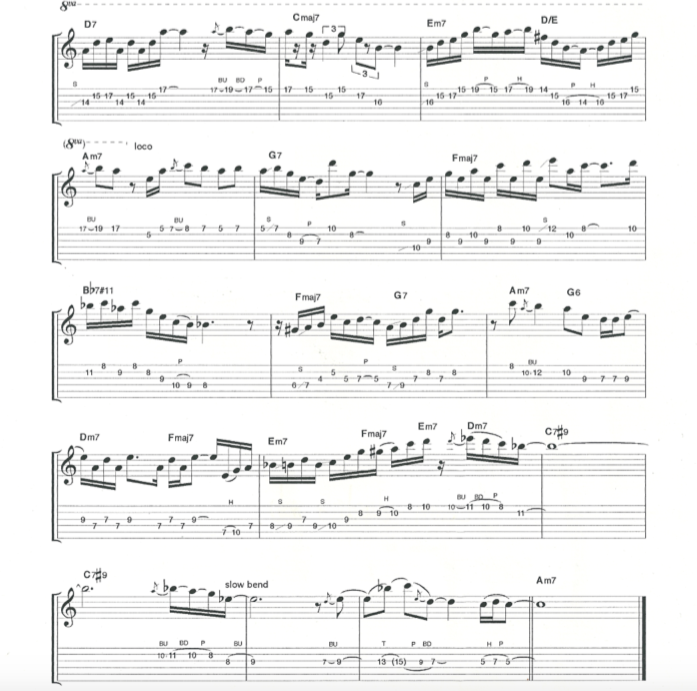
transcription 1
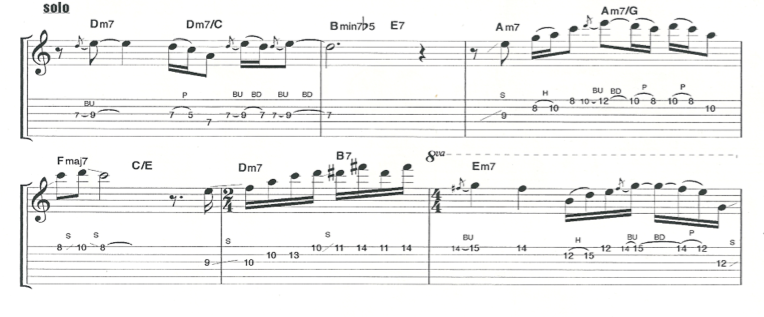
transcription 2
… and my annotation …
NB – For the most part, we’re in A minor here.
Bar 1
The solo opens with a lick based around bending up to E, this is the 9th of Dm7 – the chord underneath – outlining a minor 9th chord, something which becomes a theme over minor chords as the solo builds.
Bars 2-4
Bars 2-3 are comprised of a II-V-I in Am. The tension builds in the harmony with the dissonant II and V chords, over which Carlton holds a common chord tone – D being the b3 of Bm7b5 and the b7th of E7 – before resolving to Am, where Carlton plays a run up the 2nd shape of the A minor pentatonic scale, landing on a C on beat 2 of bar 4 – the 5th of the Fmaj7 chord underneath.
Bar 5-6
This bar sets up a brief modulation to Em via its V chord – B7. Carlton outlines the change, ascending the D minor pentatonic scale over the Dm7, before sliding into D# – the 3rd of B7 – and bouncing back and forth between D# and F# at the top of what would be the C-shaped B7 arpeggio ( shown below).
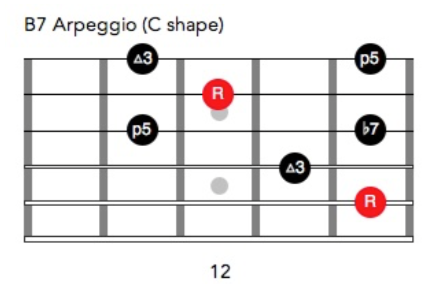
C-shaped B7 arpeggio
Kid Charlemagne Transcription PDF
That transition lick leads straight into a bend from F# to G – the 9th and 3rd of Em7 – before lingering on the minor 9th as he did in bar 1. The rest of this lick is based in the E Aeolian shape (shown below).
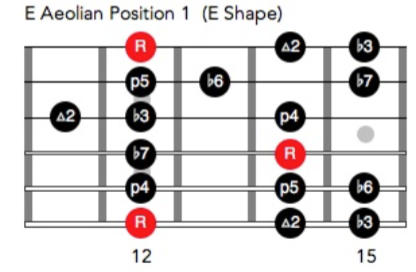
E Aeolian shape
Bars 7-8
Here we have a cool little lick in the D Mixolydian shape in bar 7 before a C major 9 arpeggio in bar 8.
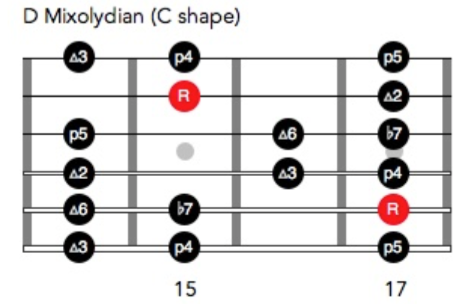
D Mixolydian
Bar 9
This one’s really fun – the first eight notes ascend an Em7 arpeggio before then descending a D major arpeggio in the same position as bar 7.
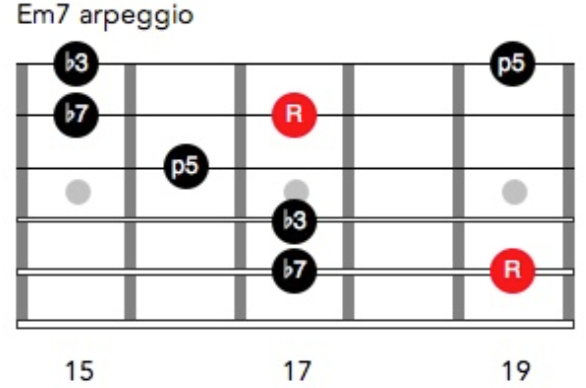
Em7 arpeggio
Steely Dan
Bars 10-11
Here Carlton lingers around the minor 9 again – flipping to and from the B on the 7th fret of the e-string over the A minor, before sliding up into a G major arpeggio, into which he adds the 13th (E on the 9th fret of the g-string) for a bit of colour.
Bar 12-13
These are probably the two most technical licks in the passage. The first, over Fmaj7, ascends the A minor pentatonic from G to E whilst alternately bouncing off a pedal note of E. This is tricky to pick. My recommendation, should you need it, is to alternate pick it, with the recurring 9th fret of the G string on the up strokes and the ascending line on the down strokes.
Bar 13 contains plenty of action. The harmony features a Bb7 which comes from a tritone substitution of Am’s natural V chord – E7 – so it’s the perfect place for adding some tension. The first three notes of the bar are the root, 9th and 7th of Bb7, but following these is a descending C major arpeggio, superimposed over Bb7. This gives us the 9th, 13th and #11, from the Bb lydian dominant scale. This peach of a lick is rounded off with a short chromatic run down from the 9th to the root via the b9, jazztastic!

Bb lydian dominant scale
Incorporating melodic minor sounds can be pretty confusing; the shortcut I’ve learnt from this lick, simply put, is to play a major triad a tone up from a dominant
chord to get the Lydian Dominant sound.
Bar 14
Bar 14 is two straight forward major arpeggios over F and G, with a slide from a leading note at the start of each. Both these arpeggios come from the same C- shaped major arpeggio.

C- shaped major arpeggio
Kid Charlemagne
Bar 15-16
Here Carlton continues his theme of hitting the 9th over every minor chord, bending up from the 10th fret to a B over Am. In bar 16, a four-note phrase is played twice, the final and longest note in the phrase is E which functions firstly has a minor 9th over Dm7, and then as a major 7th over Fmaj7.
Bar 17
The final lick starts at the end of bar 16, and is a run up the E blues scale into an F major 9 arpeggio with a chromatic passing note between the 9th and 3rd – frets 8, 9 and 10 on the B-string. This run ends on a Bb – the 7th of the C7#9 vamp the passage ends on.
Conclusions
More than I have time to get into, but in short:
– Hitting a 9th will jazz up any minor chord, extra points for bending up to it.
– A simple way to get the Lydian dominant sound is to play a major triad a tone up
from the dom7 chord you’re playing over. A nice trick is to play the triad of the chord you’re playing over, then shift it up a tone, and then back down again.
– Add 9th and 13ths to major arpeggios over dominant chords – as in bars 7 and 11. – Larry Carlton is awesome. I sorely hope this one was meticulously written and not improvised!
Sean Kelly
